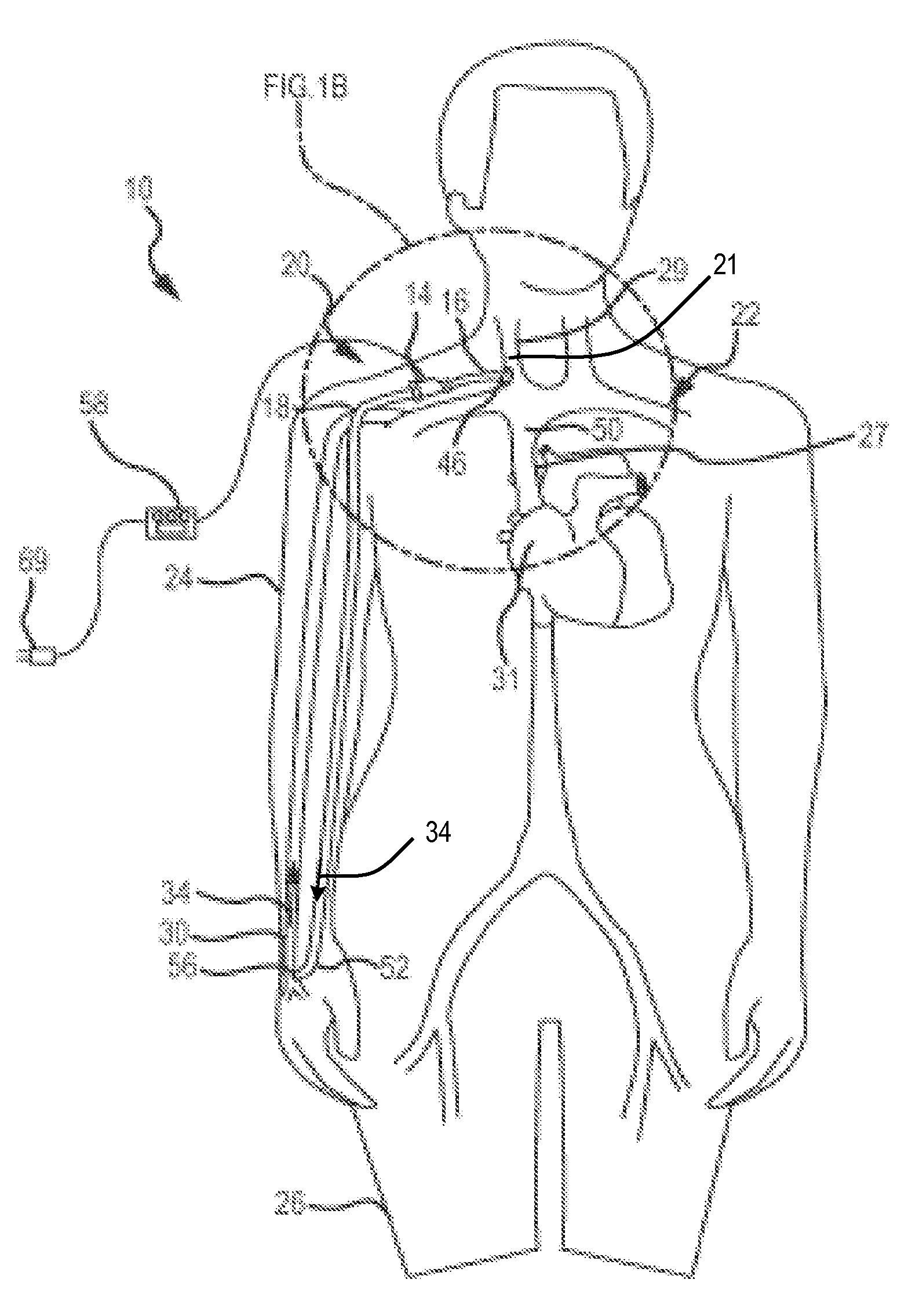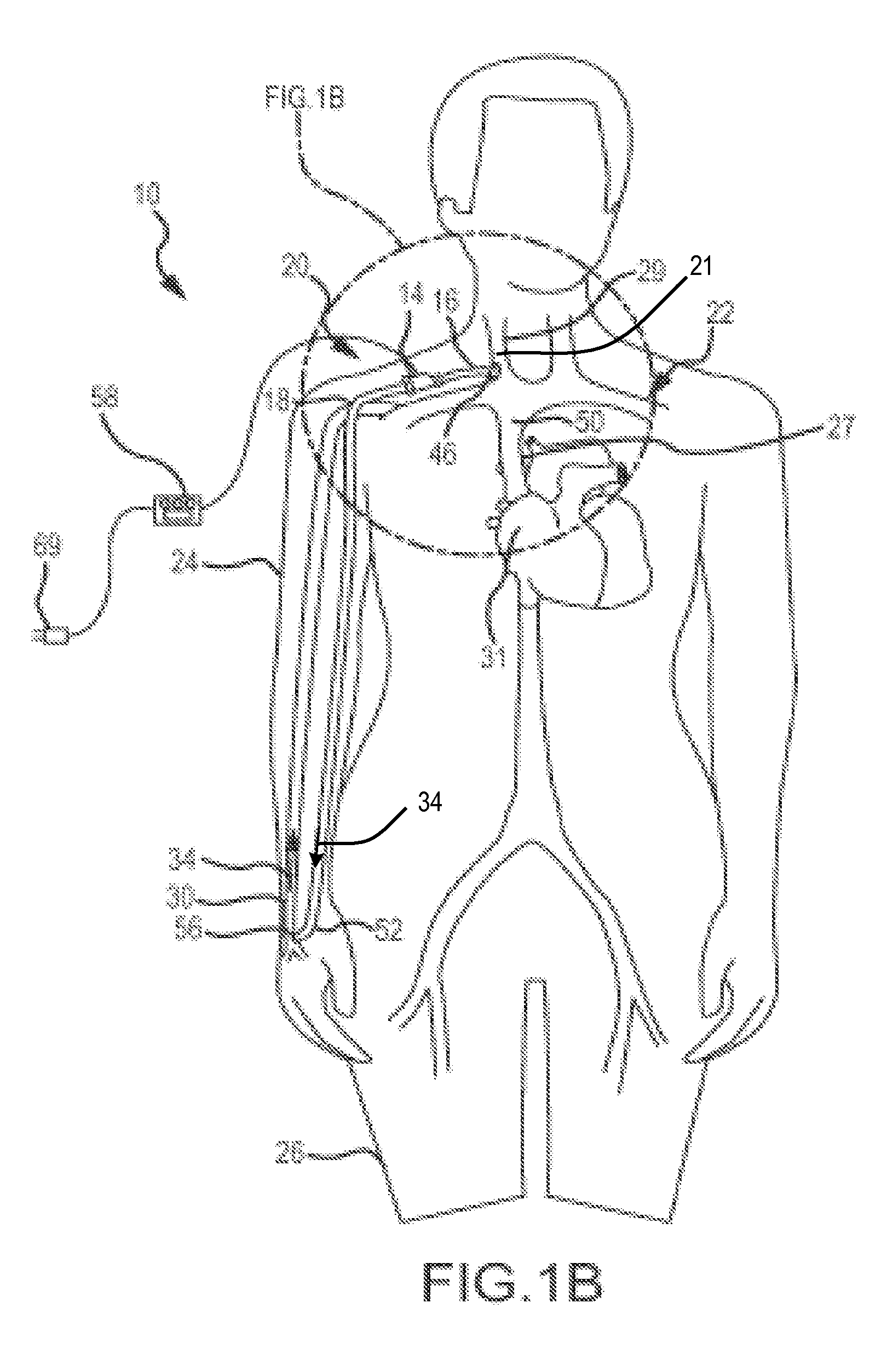System and method to increase the overall diameter of veins
a technology of overall diameter and vein diameter, which is applied in the field of system and method to increase the overall diameter of veins, can solve the problems of high failure rate and complications of each type of site, high burden on health care providers, payers, etc., and achieve the effect of facilitating diagnostic angiography
- Summary
- Abstract
- Description
- Claims
- Application Information
AI Technical Summary
Benefits of technology
Problems solved by technology
Method used
Image
Examples
fourth embodiment
b>FIG. 4B is a schematic view of the pump-catheter assembly of FIG. 4A as applied to a circulatory system of a patient in accordance with the present invention;
[0042]FIG. 5A is a schematic view of a pump-conduit assembly of a system and method in accordance with a fifth embodiment of the present invention;
[0043]FIG. 5B is a schematic view of the pump-conduit assembly of FIG. 5A as applied to a circulatory system of a patient in accordance with the fifth embodiment of the present invention;
[0044]FIG. 6 is a schematic diagram of a pump operated in conjunction with a control unit for use in any of the above-mentioned embodiments;
[0045]FIG. 7 is a flow chart of a method in accordance with the first and third embodiments of the present invention;
[0046]FIG. 8 is a flow chart of a method in accordance with the second and fourth embodiments of the present invention; and
[0047]FIG. 9 is a flow chart of a method in accordance with the fifth embodiment of the present invention.
PUM
 Login to View More
Login to View More Abstract
Description
Claims
Application Information
 Login to View More
Login to View More - R&D
- Intellectual Property
- Life Sciences
- Materials
- Tech Scout
- Unparalleled Data Quality
- Higher Quality Content
- 60% Fewer Hallucinations
Browse by: Latest US Patents, China's latest patents, Technical Efficacy Thesaurus, Application Domain, Technology Topic, Popular Technical Reports.
© 2025 PatSnap. All rights reserved.Legal|Privacy policy|Modern Slavery Act Transparency Statement|Sitemap|About US| Contact US: help@patsnap.com



